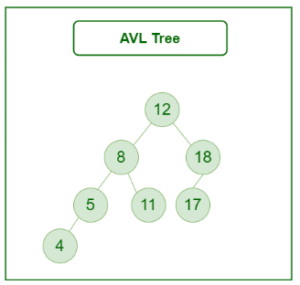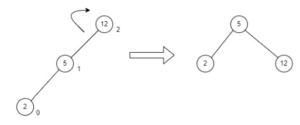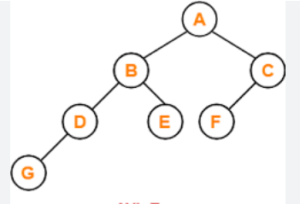An AVL tree is a type of binary search tree that keeps itself balanced. Named after its inventors, Adelson-Velsky and Landis, the AVL tree makes sure that the tree’s height is always kept small, which helps in making data retrieval fast. This article explains the basics of AVL trees in simple terms that acan understand.
Read more: Contiguous Memory Allocation In OS
Table of Contents
ToggleWhat is an AVL Tree?
An AVL tree is a special kind of tree used in computer science. It’s a type of binary search tree where the difference in height between the left and right subtrees of any node is at most one.
This balance helps in keeping operations like searching, inserting, and deleting data fast.

Why Balance Matters
When a tree is balanced, it means that it is not too tall. If a tree becomes too tall, finding something in it takes longer. An AVL tree automatically keeps itself balanced, making sure it doesn’t get too tall, which keeps the time needed to find, add, or remove items short.
How AVL Trees Stay Balanced
AVL trees use rotations to stay balanced. When a new item is added or an item is removed, the tree checks if it is still balanced. If it’s not, the tree performs rotations.
Rotations are simple moves that keep the tree balanced. There are four types of rotations: right, left, right-left, and left-right.

Advantages of AVL Trees
AVL trees are great because they always keep operations like finding, adding, and deleting items fast. This is important in many computer programs where speed is crucial.
Balanced trees like AVL trees are often used in databases and other applications where quick data access is needed.

Disadvantages of AVL Trees
One downside of AVL trees is that they can be complex to understand and implement compared to simpler trees like regular binary search trees.
Also, because they have to stay balanced, they might do more work when items are added or removed, which can take a bit more time compared to unbalanced trees.
FAQs
How does an AVL tree differ from a binary search tree?
An avl tree is a type of binary search tree that keeps itself balanced, meaning the height difference between the left and right subtrees is always at most one.
Why are rotations important in AVL trees?
Rotations are used to keep the tree balanced when items are added or removed, ensuring that operations remain fast.
What are the main operations in an AVL tree?
The main operations are searching for items, adding new items, and removing existing items. These operations are fast because the tree stays balanced.
Where are AVL trees used?
Trees are used in applications where quick data access is important, like databases and search engines.
Who invented the AVL tree?
The tree was invented by two computer scientists named Adelson-Velsky and Landis.
Conclusion
AVL trees are a powerful tool in computer science because they keep data organized in a way that makes finding, adding, and removing items fast.
Even though they can be a bit complex, their ability to stay balanced makes them very useful in many applications. Understanding AVL trees helps us see how computers keep things running smoothly behind the scenes.








